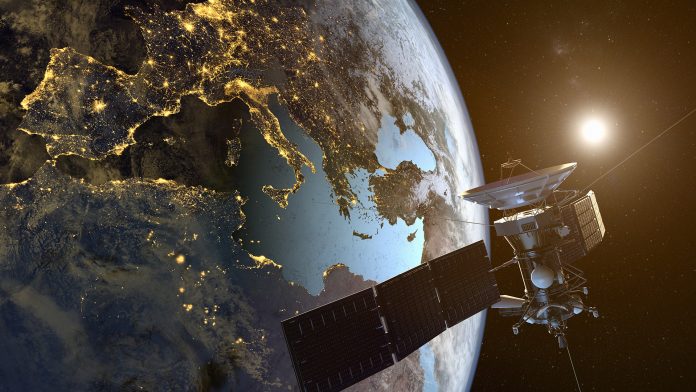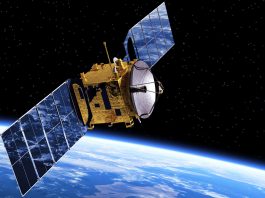The European Space Agency (ESA) has successfully launched the Eutelsat Quantum satellite – groundbreaking technology that can be reprogrammed whilst operating in space – a significant advancement in satellite communications.
The pioneering technology was developed under a European Space Agency partnership project, which saw the ESA collaborate with satellite operator Eutelsat and industry-leading manufacturer Airbus. Eutelsat Quantum is a landmark achievement for British industry, with the vast majority of the components and technology comprising the satellite being designed and manufactured in the UK.
The prime contractor for the UK flagship project – Airbus – was tasked with developing the payload of the satellite, with the state-of-the-art platform for Eutelsat Quantum created by Surrey Satellite Technology Ltd.
Eutelsat Quantum: The future of satellite technology
The Eutelsat Quantum satellite was launched from Europe’s Spaceport in French Guiana on July 30 onboard an Ariane 5 rocket, ushering in a new generation of flexible software-defined satellites that can respond in near real-time for a plethora of potential applications. The revolutionary satellite has now reached its geostationary orbit – at an altitude of 36,000 km above the Earth – where it completed an efficacious spacecraft systems checkout.
Eutelsat Quantum greatly advances telecommunication technologies because, unlike traditional satellites that are hard-wired to a designated task or purpose, the novel satellite can be reconfigured and repurposed while in space to meet a range of demands.
The 3.5-tonne satellite achieves this unprecedented versatility through its eight communication beams that can be redirected in near real-time, a significant enhancement that will enable a more efficient response to the ever-changing, unpredictable events that satellites are utilised for.
An array of applications
The rapid response time and reconfiguration proficiency of Eutelsat Quantum make it ideal for providing travel information such as traffic updates for land-based transport and passengers onboard moving ships or planes. Additionally, when demand surges, the beams can be easily adjusted to deliver more data.
The satellite is also ideal for monitoring and aiding in emergencies and disaster recovery scenarios, as it can quickly adapt to the unpredictable nature of severe weather events and global catastrophes. Furthermore, Eutelsat Quantum can detect and characterise any rogue emissions, which allow it to respond efficiently to accidental interference or intentional jamming.
The satellite will operate in geostationary orbit for its lifespan of 15-years, at the end of which it will be safely transferred into a graveyard orbit away from Earth so that it does not become a hazard to other satellites.
Amanda Solloway, the UK Science Minister, said: “By investing in groundbreaking international projects like this one, we are helping UK businesses transform science fiction into a commercial advantage, resulting in jobs, growth and innovation. This game-changing technology will ensure the UK continues to lead the world on telecommunications satellites and further bolster our growing space sector.”
Elodie Viau, ESA’s Director of Telecommunications and Integrated Applications, said: “I am proud to witness the successful launch of Eutelsat Quantum, which is the result of an ESA Partnership Project. ESA fosters innovation in the space industry in the UK and across Europe and Canada, enabling it to succeed in the highly competitive global telecommunications markets. Investing in space creates jobs and prosperity on Earth.”
Ben Stocker, Director of Projects at Surrey Satellite Technology Ltd (SSTL), commented: “The EutelSat Quantum programme presented many challenges for SSTL to overcome during the development of the satellite system design, mechanical design, propulsion system and key subsystems within the satellite platform.
“The skills and knowledge gained through successfully overcoming these challenges has enabled us to refine our engineering approach, especially for markets and applications where system reliability and availability are key requirements, and, with the continued support of the UK Space Agency and ESA, has put us in a very strong position to deliver our exciting upcoming pathfinder missions.”









